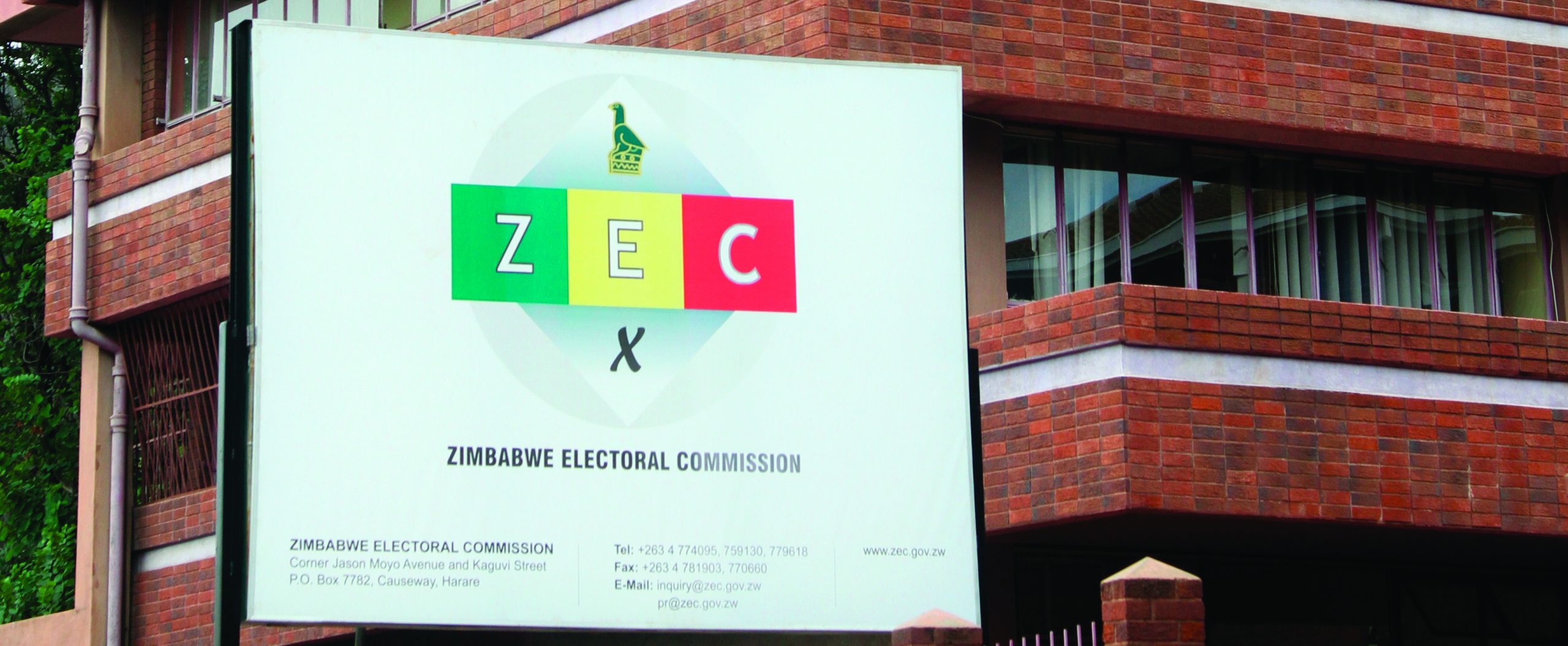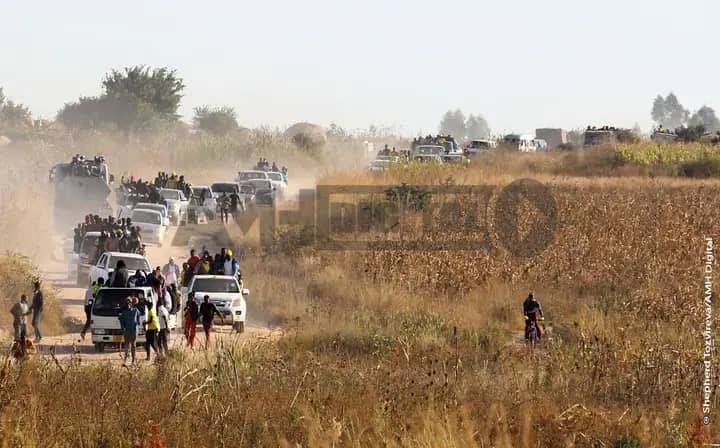
BY TAWANDA MAJONI The crazy season is back, seeing as it is the youth militia is back.
The government has just announced that it is resuming the enrolment of the militias under a nice name: Youth Service in Zimbabwe.
According to them, the programme will enroll 100 000 youths spread over 5 years. That means an average of 20 000 every year, or 10 000 every six months, or some 1 700 every month. The trainees will train over six months.
This means that, if the project starts this month, an awesome 20 000 cadets would have passed out by the time we get to the next elections in 2023. But even if the enrollments are delayed, it’s still possible to achieve that number before the elections. Things are not cast in stone and, knowing the Zanu PF government as most of us and them do, desired numbers can be achieved through crash programmes.
The authors of the militia programme are telling us that it is meant to instill discipline, respect and tolerance among the trainees who will be taken on a voluntary basis. The graduates would then be given “high priority” if they want to carry out vocational and academic studies at our tertiary institutions.
Nothing, so far, is being said about whether or not they will get “high priority” when it comes to employment in the civil service, nor what curricula they will use at the training centres. But since government is linking this programme with another one already being run by the Primary and Secondary Education portfolio, it implies that a lot of the graduates will be absorbed as teachers.
It’s easy to see that they are dangling the job carrot. We saw lots of the trainees being absorbed as nurses in the past even though they couldn’t tell a chisel from a syringe. We saw many of them getting into teaching even though they could hardly count up to 10 and still don’t know the difference between cheese and chalk.
After all, during the coalition government between 2009 and 2013, estimates are that about 75,000 youths and other people were taken in as ghost workers. We all know where they were coming from.
- Chamisa under fire over US$120K donation
- Mavhunga puts DeMbare into Chibuku quarterfinals
- Pension funds bet on Cabora Bassa oilfields
- Councils defy govt fire tender directive
Keep Reading
It wasn’t even going to be necessary to try and curry favour with us by loudly announcing that beneficiaries of the project will be recruited on a voluntary basis. Strictly speaking, there is nothing voluntary about this. The majority of Zimbabwean youths is jobless. They would kill for any opportunity that gives them a job. So, they will be forced to join the youth service project by hunger and poverty. No free choice there.
The first and foremost temptation is to trace the dots regarding the re-introduction of the youth militia programme to next year’s elections. As you know too well, there will be general elections in 2023, any time from July.
When the programme was introduced at a deliberate level at the turn of the millennium when Zanu PF fortunes were fast receding, the youths notoriously known as Green Bombers or Border Gezi were closely aligned to the ruling party. They were used to maim and kill dissenters. That was during the time of the fast track land redistribution programme. They were invariably used to terrorise opponents during subsequent elections. The idea was to cow people into submission, so as to preserve the tenure of those in power.
The timing of the reintroduction of the youth service militia by the so-called “Second Republic”—which, in reality, walks, quacks and flaps like a pre-age version of the first republic — thus gives a good hint of what the project is all about. There are issues of trust here. You can’t tell us you are going to bring back a project associated with terror on the eve of a new election. People have sharp memories, and they will easily associate the new project with the ones that were there in the past.
The year 2008 has come and gone, yes, but it’s not easy to forget that year. There was systematic violence against the opposition and imagined enemies of Zanu PF that resulted in gory murder, torture, displacements and hurt. The youths were used to do the killing and maiming, just as the youths had done from the time the late Zanu PF political commissar, Border Gezi, premiered in the establishment of the youth militia. They were law unto themselves in 2008 when they were used as foot soldiers to set up and run torture camps.
They cut off the limbs of both imagined and real opponents when we got into the run-off phase after the late Robert Mugabe was beaten in the presidential contest by the also late Morgan Tsvangirai of MDC. They robbed villagers of their livestock and sent many into exile. They were part of the campaign that killed hundreds of people.
What’s worse? The very people who structured and marshalled the June 27: Win or War terror campaign during the run-off period are still there, apparently more powerful today than they were back then.
You see, a lot is stake at the 2023 elections. Nelson Chamisa of CCC is raging like a typhoon right now. He is scaring the socks off Zanu PF. He poses a serious existential danger to President Emmerson Mnangagwa who is likely to be the Zanu PF candidate. But despite Chamisa’s huge popularity, he may still fail to bag an outright win when the times comes.
But even die-hard Zanu PF people know that Chamisa will be such a big challenger that, even in the event of a Mnangagwa victory, there will be no decisive winner. A recent Afrobarometer survey hinted at that. Since it’s likely that neither Mnangagwa nor Chamisa will get more than 50% as is required for one to form the next government, there is bound to be another presidential run-off.
This is where the youth militia will become relevant, if history is going to be useful enough in this context. Thing is, if Chamisa forces a run-off, Zanu PF will slide into very panicky mode. When Zanu PF does that, as has always been the case, it’s Armageddon. That party loves power too much and it will use hook and crook to keep it. Since it used the youth militia in 2008, it’s a good and grounded prediction to say that it will use the young pawns once again in 2023 if there is a run-off.
It seems, therefore, that Zanu PF is bribing young people to ensure a skewed electoral victory next year. It’s dangling jobs and study opportunities, knowing very well that the response to its equally skewed youth training project will be oversubscribed due to high youth unemployment and the attending hunger. Hunger, by the way, is one portent instrument politicians use to make people vulnerable and then manipulate them.
It’s pretty important to acknowledge that youth militias would always be useful for Zanu PF. Here is a party that has hardly invested in its young ones and a very necessary generational renewal. The old madalas form the fulcrum and pith of power. They are in denial mode and, strangely and crazily, seem to be thinking that they will rule for ever. Call that the Herod effect if you like. Nothing is new about it, though. Mugabe was going to rule from the grave if they hadn’t pushed him over the cliff that eventful November in 2017.
There is a telling coincidence. As government — to mean Zanu PF, of course — brings back the youth militia, there is a resurgence in machete gang violence involving mostly young illegal miners. These young people have been sponsored in the past to terrorise ruling party opponents, both real and imagined. The combination of the youth service militias and the machete gangs is as ominous as it is spooking.
When all is said and done, though, it’s clear that the Zimbabwean economy can’t sustain a new project like the youth service one. Civil servants are crying out for better working conditions. Clinics and hospitals need drugs and so on. The list is long. Yet our politicians are embarking on a new programme that needs huge resources. For the what?
- Tawanda Majoni is the national coordinator at Information for Development Trust (IDT), a non-profit organisation that supports journalists. The views expressed in this article are those of the author and not necessarily reflect AMH’s editorial stance. He can be contacted on majonitt@gmail.com










